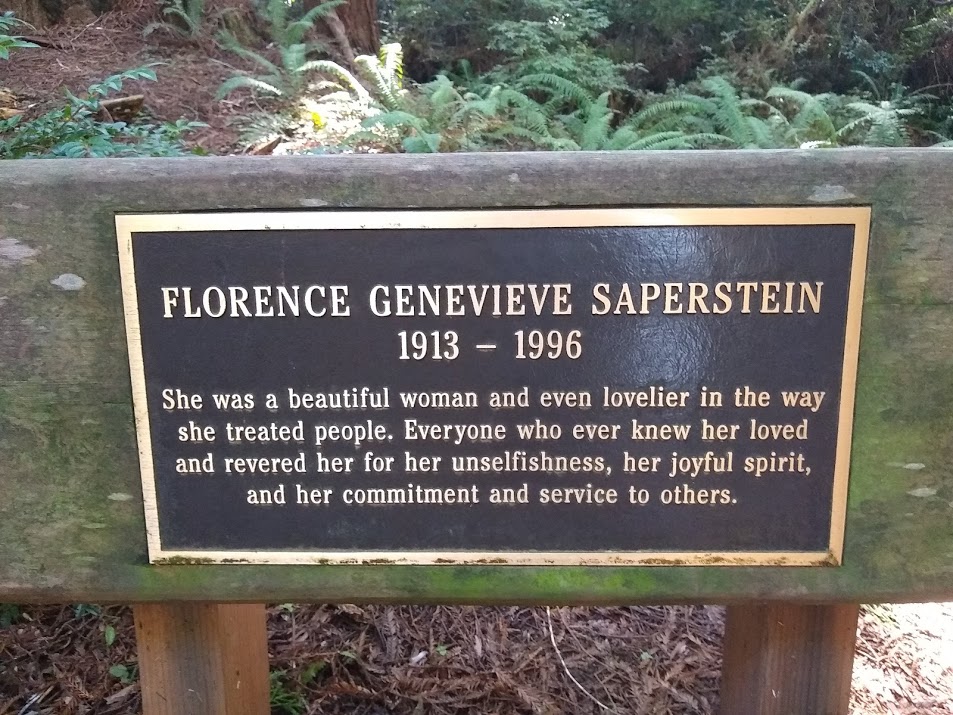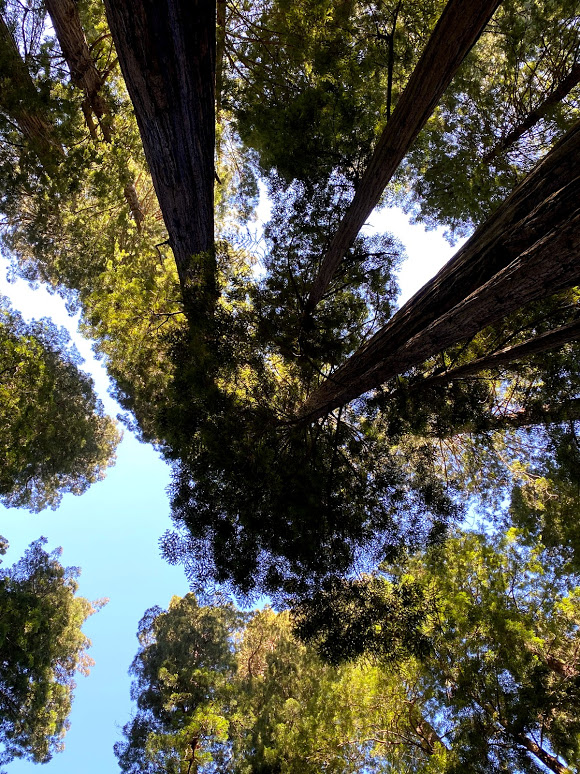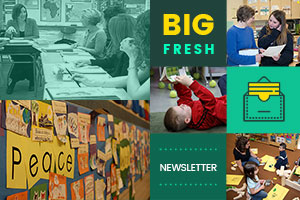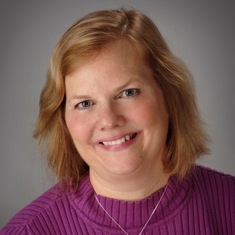Work hard in silence—let your success be your noise.
Frank Ocean
Early this spring, I spent a couple of weeks hiking with my family in a remote patch of the Redwoods National Forest in Northern California. The area was deserted—it was a quiet time of year, and we were at the very beginning point of the pandemic. It seemed like the whole world was frozen in place, trying to figure out what might come next.
One particular forest had an interesting feature—benches spaced every half mile or so, dedicated to individuals with a plaque about their lives. Most plaques had a quick note about philanthropy or family. But it was the words on this bench dedicated to Florence Genevieve Saperstein that stay with me to this day:

She was a beautiful woman and even lovelier in the way she treated people. Everyone who ever knew her loved and revered her for her unselfishness, her joyful spirit, and her commitment and service to others.
I read the words a couple of times, looking at the bench, and then looking up at the canopy of gargantuan trees, a hushed natural cathedral.
It was a surreal moment in a surreal week. Each day we would hike on long trails, out of cell phone range and out of touch with the world beyond. In the late afternoon we’d drive back to an Airbnb, reconnect to Wi-Fi or turn on the television, and discover how much more of normal life had disappeared in the previous eight hours. The date stamps on these photos is March 12, the day after the NBA and other sports leagues paused their seasons. The day after Tom Hanks announced he had COVID. The day after the World Health Organization had declared a pandemic. It was that brief transition stretch when we were all realizing we were on the threshold of a challenging time that would be like no other in our lives, with no points of reference from the past to guide us.

She was a beautiful woman and even lovelier in the way she treated people.
I read those words and looked up at those trees again. Florence Genevieve Saperstein’s life was not even a speck of carbon in one of the hundreds and hundreds of tiny rings in one of those trees.
Everyone who ever knew her loved and revered her for her unselfishness, her joyful spirit, and her commitment and service to others.
I read those words and knew the events of that cataclysmic week meant nothing in the scheme of the hundreds of years these trees had stood silently, enduring fires and floods and man-made ravages.
And yet.
One woman in her brief time on earth had such an impact on others that those beautiful words would be read by scores of hikers, all on our own unique journeys through this world, reminding us of how much is possible in one life.
This time is a test of who we are. It is not too difficult to be gracious through a short-term trial. It feels impossible to be unselfish and joyful when we have no idea when the trial will end. Whatever Florence Genevieve Saperstein went through in her life, she managed the impossible. And so her influence endures, if only in making travelers pause and consider how they want their own lives to be remembered.
It was a quiet moment in an increasingly noisy world. It resonated for me in part because my work for Choice Literacy has almost always been quiet. Over the past 14 years I’ve spent a lot of time looking out the window to the trees in my own backyard, pecking away at newsletters. I’ve spent countless hours sitting by myself in a classroom, scanning the room for a spark of learning between a child and teacher. I’ve experienced the silent joy of reading a brilliant new draft from a favorite contributor hundreds of times.
This is the last issue of the newsletter I will be editing. It’s been the professional honor of my life to work with the 150 contributors who have made Choice Literacy so much bigger than any one person or school or classroom. The site has grown more than I could ever have imagined when I launched it in 2006.
The website and newsletter are now in the capable hands of Ruth Ayres and the Lead Learners Consortium, who continue its mission to provide resources that honor the voices of teachers, school leaders, and children working together every day. I leave you all with heartfelt gratitude for your patience over the years in helping Choice Literacy adapt to an ever-changing world of literacy learning.
This week we circle back to the theme that launched the whole website—choice. Plus more as always—enjoy!
Brenda Power
Founder, Choice Literacy

Goals are meaningful for students only if they have some choice in creating them. Clare Landrigan and Tammy Mulligan take a child step by step through the process of creating a meaningful writing goal.
Ruth Ayres explores the boundaries of choice in writing workshops.
Ruth Shagoury finds herself checking out during dysfunctional staff meetings. A mentor shares an anecdote about choice and advice that helps her rethink her role with colleagues.
Patti Shepherd shares the power of choice boards in supporting distance learning.
It’s tough these days for preservice teachers to get into classrooms to observe teachers and students in literacy workshops for required field experiences. Most schools will not allow visitors or interns during the pandemic, and many districts have moved to fully online instruction. Choice Literacy to the rescue! We are now offering a virtual field experience through the over 900 classroom videos from grades K-8 on the site, featuring top teachers from around the country. We’ve developed this $49 option as an alternative to a traditional fieldwork experience, and it includes a three-month Classic Classroom membership. You can read more about it and register here.
In our online course Better Student Feedback, Ruth Ayres shares a wealth of resources from Choice Literacy contributors focused on the power of giving and receiving student feedback. These courses are free to our paid annual subscribers, and the low fee of $39 for non-subscribers includes a two-month membership to the site. Click here for details.

New members-only content is added each week to the Choice Literacy website. If you’re not yet a member, click here to explore membership options.
Christy Rush-Levine questions whether her students have true autonomy and authentic choice in her workshop. She makes changes and is amazed at their effect not only on students, but on her teaching.
Tara Barnett and Kate Mills share their favorite strategies for building a classroom community of readers where everyone has many options for choosing their next book.
In this week’s video, Katherine Sokolowski confers with fifth grader Tucker about his Harry Potter book. This brief conference opens up a world of possibilities for integrating the reading into his life, including connections to the movies, recommendations for a classmate, and suggestions for using an audiobook on a trip so that the whole family can enjoy it.
In an encore video, Mandy Robek has a book choice conference with Drew. She shares how she asks questions and listens to help our youngest learners understand their interests and make thoughtful selections.

Suzy Kaback uses the “My Life in Seven Stories” exercise from Jennifer Allen to coax teachers to write, share drafts, and connect their learning to crafting writing in classrooms.
Students move from our school districts to ones next door all the time. How can school leaders ensure the moves are as seamless as possible, especially in the realm of literacy and building good family relationships? Jen Schwanke shares a case study of how a meeting and transfer of files made all the difference for one struggling learner.
Brene Brown is fearless in helping leaders link their work to core values. In this blog post, she presents tools and strategies for strengthening the connections between what you care about the most and school communities.
Quote It:
The purpose of life is to discover your gift. The meaning of your life is in giving your gift away.
David Viscott
That’s all for this week!



